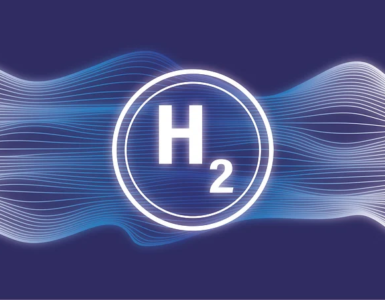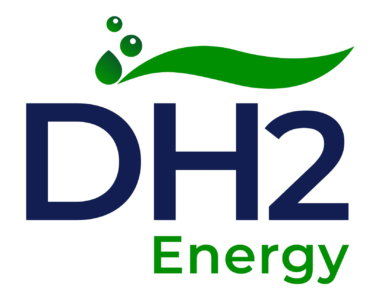Saudi Arabia Hydrogen industrial strategy.
This commentary is part of Energy Rewired, a project from the CSIS Energy Security and Climate Change Program studying the industrial strategies of major economies for the energy transition. The project examines countries’ big bets on emerging energy technologies and how these will rewire the world’s energy map.
Analysis
Vision
Saudi Arabia’s interest in hydrogen is primarily driven by its desire to ensure economic security. Hydrogen can help the world’s top crude oil–exporting country meet several key mandates of the Saudi Vision 2030: diversify its exports, leverage existing sectors’ supply chains to increase local contents, and develop new industrial sectors.
🔥 What about we co-host a webinar? Let's educate, captivate, and convert the hydrogen economy!
Hydrogen Central is the global go-to online magazine for the hydrogen economy, we can help you host impactful webinars that become a global reference on your topic and are an evergreen source of leads. Click here to request more details
Indeed, Saudi Arabia wants to become the top supplier of hydrogen in the world. Hydrogen production would allow Saudi Arabia to become less reliant on domestic oil as the key source of income from global markets. This may be of particular value to the kingdom in the carbon-constrained world that is characterized by a wave of net-zero targets from governments and industries around the world.
Moreover, hydrogen production speaks to the kingdom’s existing expertise and supply chain capacities, such as its experience in industrial-scale production of hydrogen and chemicals, as well as the capture and storage of CO2. Its expertise and capacities can help underpin the Saudi vision for commercially viable production and export of hydrogen, which is based on hydrocarbon resources with the carbon capture, utilization, and storage (CCUS) of emissions (“blue hydrogen”).
In addition, hydrogen from renewable energy sources (“green hydrogen”) could mean a new industrial sector for Saudi Arabia, much of whose landmass is located in the sun belt and has vast areas of flat land for solar panels. The kingdom has announced plans to install about 27 gigawatts (GW) of mostly solar capacity by 2023 and almost 58 GW by 2030.
The kingdom’s installed renewables capacity remains limited today, however. As of the first half of 2020, utility-scale photovoltaic capacity stood at 330 megawatts (MW). This raises a question over the timeline in which the Saudi hydrogen vision may materialize with renewables-based supplies.
The development of a clean hydrogen industry, particularly the use of blue hydrogen, would also echo the kingdom’s growing pursuit of a circular carbon economy, which is a framework for managing and reducing emissions through carbon reduction, reuse, recycle, and removal. The domestic consumption of clean hydrogen, such as in transportation, would help reduce the carbon profile of the Saudi economic activities.
What is more, the kingdom could position itself as a facilitator of a global energy transition by proactively marketing its clean hydrogen supply to hydrocarbon-importing countries that desire to procure lower-carbon energy sources. Meanwhile, it remains to be seen what the development of clean hydrogen may mean for the role of natural gas for the kingdom.
Would its hydrogen export interest supersede the earlier Saudi interest in exporting natural gas—via pipelines or vessels? Would blue hydrogen offer a new outlet for its natural gas?
Strategy
An official strategy or roadmap is reportedly under development. While there isn’t yet a clear outline of priorities and policies or comprehensive targets and timelines, various statements from political leaders and corporate executives provide insight into how Saudi Arabia may pursue hydrogen deployment. Moreover, the scope and depth of the hydrogen strategy would be closely linked to the kingdom’s CCUS strategy as the pace in which the range of CO2 use beyond enhanced oil recovery (EOR) develops can significantly affect the commercial viability of blue hydrogen production.
Saudi Arabia is exploring ways to become the top supplier of hydrogen in the world and has clean hydrogen production targets of 2.9 million tons per year (t/yr) by 2030 and 4 million t/yr by 2035. The current focus is to gain a large market share in blue hydrogen, particularly in the form of blue ammonia (i.e., ammonia produced from the combination of ammonia synthesis using hydrocarbon CCUS) in the coming decade.
Saudi Arabia took a major step in September 2020, when its state oil firm Saudi Aramco shipped 40 tons of blue ammonia from Saudi Arabia to Japan. This was the world’s first demonstration of blue ammonia supply chains, entailing the production and international maritime transportation of blue ammonia.
This project reaffirmed Aramco’s view that existing technology solutions (i.e., the extraction, processing, and conversion of natural gas into hydrogen and ammonia) can help provide cost-effective and scalable low-emission solutions.
The kingdom is also working with South Korea. Aramco has a Memorandum of Understanding with Korea’s Hyundai OilBank Co., which plans to take liquefied petroleum gas (LPG) cargoes from Saudi Aramco, convert the LPG into hydrogen, and ship the CO2 that was emitted in the process back to Saudi Arabia.
Renewables-based hydrogen is a key focus of technological and economic experiments in the futuristic city of Neom. Neom features a US$5 billion green hydrogen project that is a joint venture between Neom, Riyadh-based ACWA Power, and Pennsylvania-based Air Products.
Expected onstream in 2025, the project’s 4 GW renewable capacity would make it the world’s largest renewable hydrogen-to-ammonia facility in the world, producing 1.2 million tons per year of green hydrogen—roughly equivalent to 5 million barrels of oil per year in energy terms. (In comparison, the Saudi annual crude oil production volume is about 12 million barrels per day.)
On the consumption side, hydrogen use in the transportation sector is under active exploration. Since its first hydrogen fueling station was built in 2019, Saudi Arabia has tested Toyota Motor’s Mirai sedan-style fuel cell electric vehicles (FCEVs) at Air Product’s Technology Center in the Dhahran Techno Valley Science Park, and found them to be “ suitable for the kingdom.”
In September 2020, Hyundai Motor of South Korea made its first-ever FCEV export to Saudi Arabia (or the Middle East), where Aramco would test Korea’s crossover utility vehicle–style FCEVs (NEXO) and FCEV buses (Elec City) for economic feasibility.
There also is exploration of establishing FCEV-related manufacturing capacities in Saudi Arabia involving companies from North America and Europe, including New York-based Hyzon Motors to build an assembly plant for FC trucks and France-based Gaussin to build a manufacturing facility for on-road and off-road FCEVs.
Geography
Saudi Arabia’s blue hydrogen industry will likely develop around industrial and natural resources in the eastern part of the kingdom while its green hydrogen industry will likely be nurtured in the northwest, at least initially.
The country’s blue hydrogen vision entails the country’s ability to leverage several existing CCUS-related assets, such as the CO2 -to-EOR project at Uthmaniyah and the CO2-to-chemicals project at Jubail—both along the Arabian/Persian Gulf.
The kingdom also has interest in leveraging its natural gas resource wealth. For example, the country is planning to use a significant portion of natural gas from the Jafurah field to produce blue hydrogen.
Located roughly equidistant between Riyadh and the Saudi-Qatari border in the east of the kingdom, the Jafurah field is the largest discovered non-associated gas resource in Saudi Arabia, holding 200 trillion cubic feet of gas; Aramco targets gas production from the $110 billion project in 2024.
Meanwhile, the city of Neom, which is being developed in the country’s northwest corner by the Red Sea, is expected to play the central role in the Saudi interest in ushering in green hydrogen supply. Thanks for staying up to date with Hydrogen Central.
Key Points
- Saudi Arabia seeks to become a global supplier of hydrogen, primarily using hydrocarbons combined with the capture and storage of carbon emissions, as a key means to diversify its export profile away from crude oil in an increasingly carbon-constrained world.
- The kingdom’s vast hydrocarbon resources, existing industrial capacities, and business expertise make it an attractive supplier candidate to those energy import–dependent economies that have begun to explore hydrogen imports.
- Solar and wind resource wealth could turn Saudi Arabia into a major supplier of renewables-based hydrogen in the long run if the kingdom accelerates building out renewables capacity.
- While hydrogen likely speaks to Saudi Arabia’s strength as an energy supplier, the development of a fuel cell vehicle market and, more importantly, fuel cell vehicle manufacturing capacity at home could help the country to meet some of the major Saudi Vision 2030 mandates, such as the development of new industrial sectors and diversification of its exports.
READ the latest news shaping the hydrogen market at Hydrogen Central
Saudi Arabia’s Hydrogen Industrial Strategy, January 7, 2022








